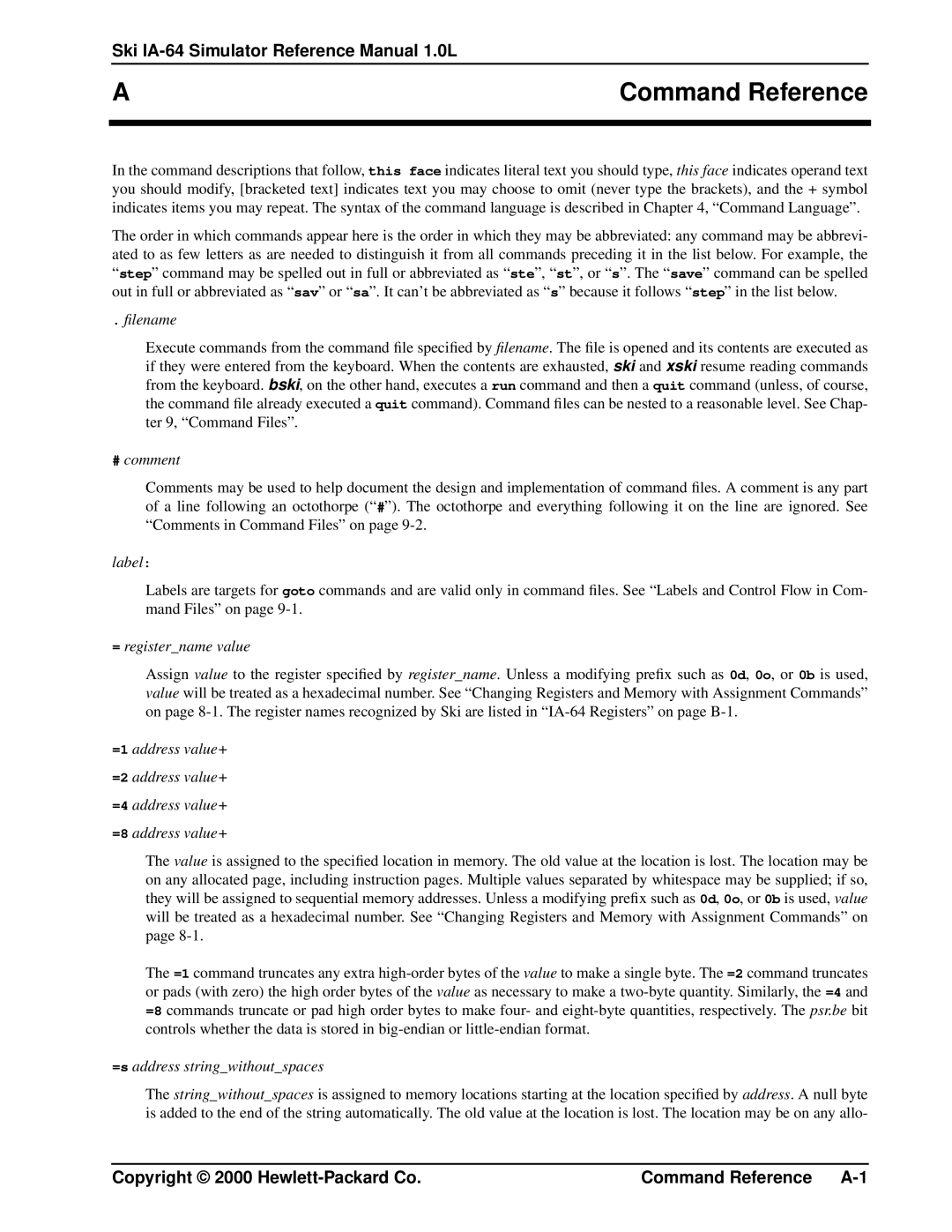
Ski IA-64 Simulator Reference Manual 1.0L
A | Command Reference |
|
|
|
|
In the command descriptions that follow, this face indicates literal text you should type, this face indicates operand text you should modify, [bracketed text] indicates text you may choose to omit (never type the brackets), and the + symbol indicates items you may repeat. The syntax of the command language is described in Chapter 4, “Command Language”.
The order in which commands appear here is the order in which they may be abbreviated: any command may be abbrevi- ated to as few letters as are needed to distinguish it from all commands preceding it in the list below. For example, the
“step” command may be spelled out in full or abbreviated as “ ste”, “ st”, or “ s”. The “ save” command can be spelled out in full or abbreviated as “ sav” or “ sa”. It can’t be abbreviated as “ s” because it follows “ step” in the list below.
. filename
Execute commands from the command file specified by filename . The file is opened and its contents are executed as if they were entered from the keyboard. When the contents are exhausted, ski and xski resume reading commands from the keyboard. bski, on the other hand, executes a run command and then a quit command (unless, of course, the command file already executed a quit command). Command files can be nested to a reasonable level. See Chap- ter 9, “Command Files”.
#comment
Comments may be used to help document the design and implementation of command files. A comment is any part of a line following an octothorpe (“ #”). The octothorpe and everything following it on the line are ignored. See “Comments in Command Files” on page
label:
Labels are targets for goto commands and are valid only in command files. See “Labels and Control Flow in Com- mand Files” on page
=register_name value
Assign value to the register specified by register_name. Unless a modifying prefix such as 0d, 0o, or 0b is used, value will be treated as a hexadecimal number. See “Changing Registers and Memory with Assignment Commands” on page
=1 address value+ =2 address value+ =4 address value+ =8 address value+
The value is assigned to the specified location in memory. The old value at the location is lost. The location may be on any allocated page, including instruction pages. Multiple values separated by whitespace may be supplied; if so, they will be assigned to sequential memory addresses. Unless a modifying prefix such as 0d, 0o, or 0b is used, value will be treated as a hexadecimal number. See “Changing Registers and Memory with Assignment Commands” on page
The =1 command truncates any extra
=s address string_without_spaces
The string_without_spaces is assigned to memory locations starting at the location specified by address. A null byte is added to the end of the string automatically. The old value at the location is lost. The location may be on any allo-
Copyright © 2000 | Command Reference |
